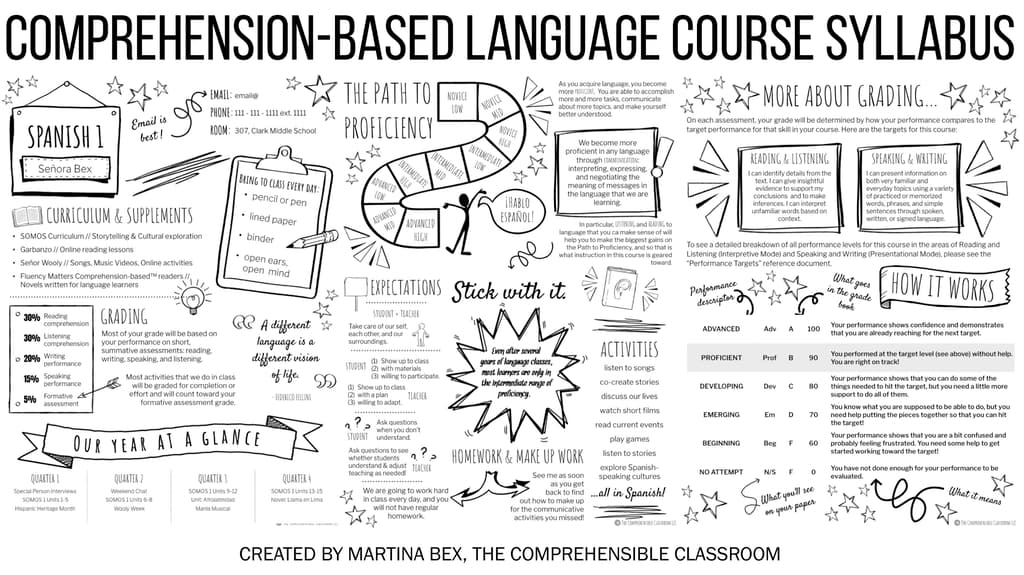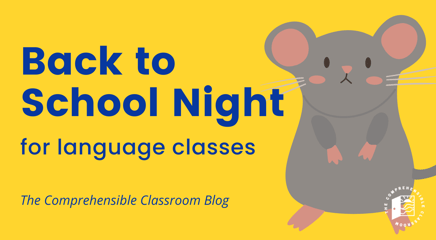I have completely recreated my syllabus almost every year that I've been teaching. I have gone back and forth trying to balance not overwhelming students with information with setting clear expectations.

Can a Syllabus contain too much information?
Well, that's an interesting question– of course, you don't want to have a 20 page syllabus that never gets read. The thing that makes me want to really limit the information I include in the syllabus is not overwhelming students on the first day, but I've realized that those things aren't mutually exclusive. As long as I limit what I talk about in the Syllabus on Day 1, I can pack it full of information.
Sometimes, I don't pass out the entire syllabus at once. I have often waited to distribute my detailed overview of Standards Based grading until just before the first assessment. In the Core Syllabus, there is an overview of grading categories, which I have found is enough to answer the questions that students and parents typically bring about grading. I can also wait to distribute the overview of Storyasking until we are about to ask our first story... but then again, that's usually on Day 1.
What information is important to communicate in a Syllabus?
These are the basic syllabus elements that I consider to be universal:
- Course title & teacher name
- Teacher contact information
- Teacher office hours/availability for help
- Materials needed for the course
- Grading policy (gradebook breakdown)
- Homework policy
Bring clarity to confusing course elements
I also think it is important to explain anything in your course that might be different than what the parents and students expect. In my case, this involved instruction (Comprehension-based vs. Grammar driven) and grading (Standards based). To that end, I also included this information in my Spanish class syllabi:
- How language is acquired (an overview)
- Overview of proficiency levels / the Path to Proficiency
- Typical class activities
- Description of storyasking
- How Core Vocabulary is different than a Vocabulary List
- What the standards are for the course
- How assignments are graded against the standard
Explain aaaaallll the policies
Finally, the syllabus is a place to write out exactly what is expected of students each day in class. I don't go over this with my students (reading through an entire syllabus on the first day is not my favorite!), but I do print it in the syllabus and send it home with students for my one-and-only homework assignment for the year, the Syllabus Homework. Here are some policies that I outline in the syllabus:
- Seating policy (especially important if you are Deskless!)
- Absence policy (how to make up work)
- Tardy policy (what does being on time look like, and what happens if you're not?)
- How to enter the room (a good time to explain Passwords if you use them)
- How to leave the room (clean-up, etc.)
- Materials policy (what happens if you don't have what you need for class)
- Academic Integrity policy (what can you and can't you do, and what happens if there is a violation)
Comprehension-based Syllabus
Taking all of that into account, here is the syllabus that I put together (Update: reformatted in December 2019):
Pictured here are just the first three pages of the Syllabus, and they are the ones that contain the most important information. On the remaining pages (which are included in the document, but not pictured) , I include the detailed overview of storyasking and all of the Policies and Procedures explanations.
Examples of World Language course syllabi
Find more Syllabus examples for World Language courses–in particular, Comprehension-based courses–on this Pinboard.
... and I'd love to see what you are using! Tag us on social media with your ideas!





